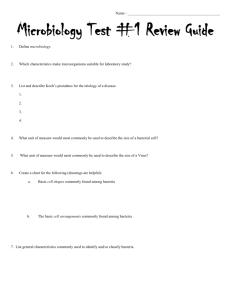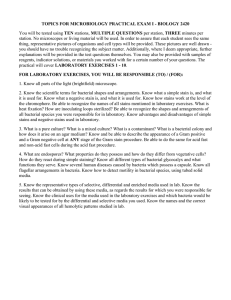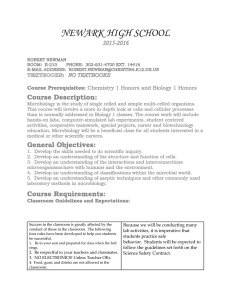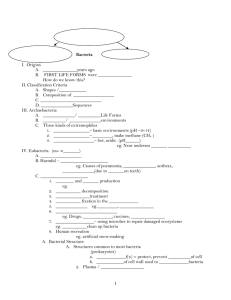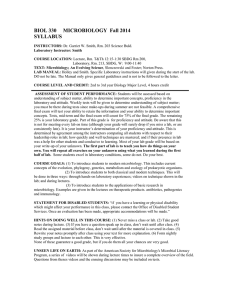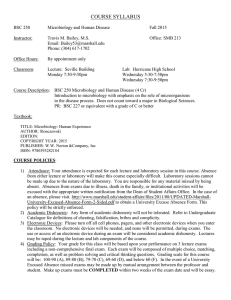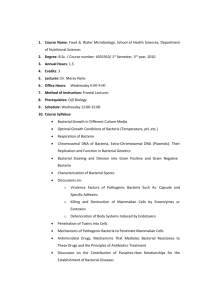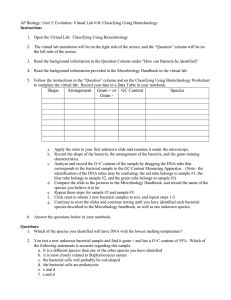Microbiology: Bacterial Cell Structure & Genetics Objectives
advertisement
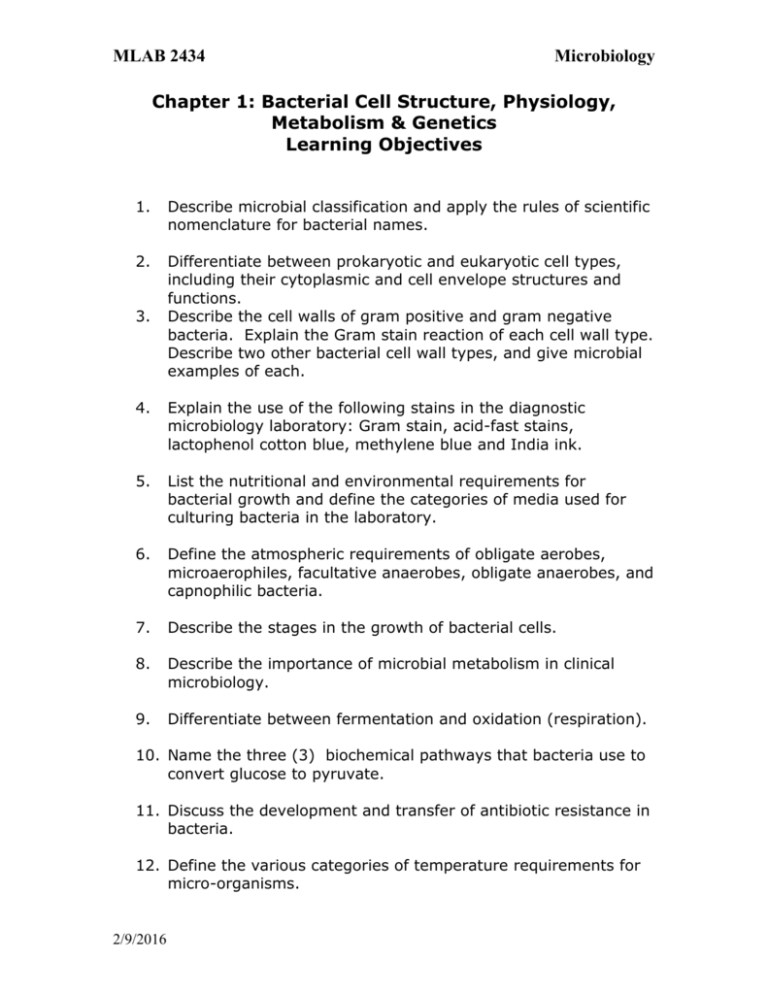
MLAB 2434 Microbiology Chapter 1: Bacterial Cell Structure, Physiology, Metabolism & Genetics Learning Objectives 1. Describe microbial classification and apply the rules of scientific nomenclature for bacterial names. 2. Differentiate between prokaryotic and eukaryotic cell types, including their cytoplasmic and cell envelope structures and functions. Describe the cell walls of gram positive and gram negative bacteria. Explain the Gram stain reaction of each cell wall type. Describe two other bacterial cell wall types, and give microbial examples of each. 3. 4. Explain the use of the following stains in the diagnostic microbiology laboratory: Gram stain, acid-fast stains, lactophenol cotton blue, methylene blue and India ink. 5. List the nutritional and environmental requirements for bacterial growth and define the categories of media used for culturing bacteria in the laboratory. 6. Define the atmospheric requirements of obligate aerobes, microaerophiles, facultative anaerobes, obligate anaerobes, and capnophilic bacteria. 7. Describe the stages in the growth of bacterial cells. 8. Describe the importance of microbial metabolism in clinical microbiology. 9. Differentiate between fermentation and oxidation (respiration). 10. Name the three (3) biochemical pathways that bacteria use to convert glucose to pyruvate. 11. Discuss the development and transfer of antibiotic resistance in bacteria. 12. Define the various categories of temperature requirements for micro-organisms. 2/9/2016 MLAB 2434 Microbiology 13. Identify three (3) miscellaneous structures found in or on bacterial cells and state their function. 2/9/2016

